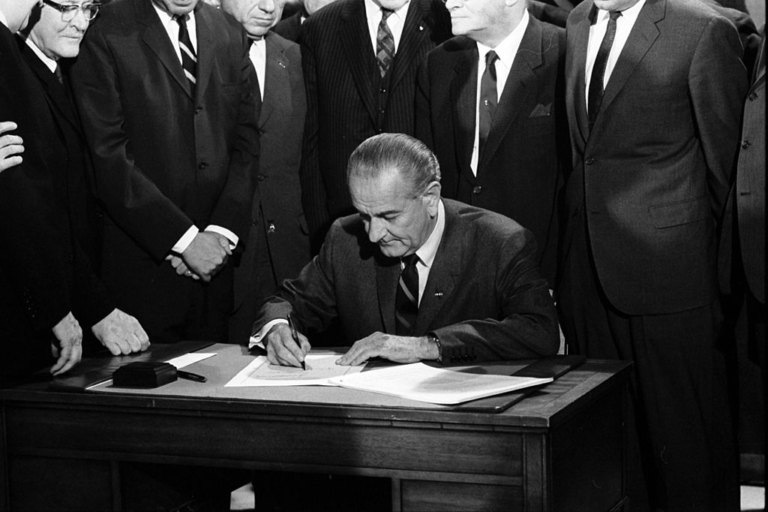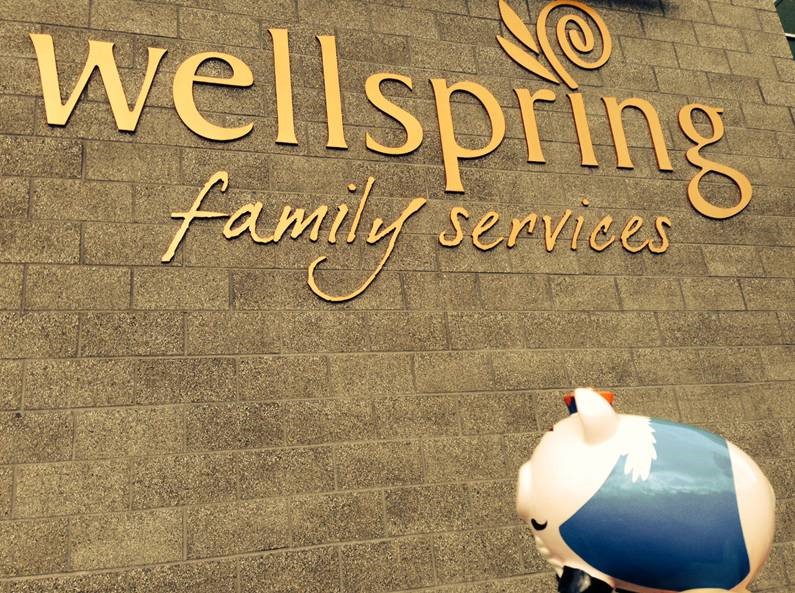A Special Edition Story From Our Partner, Greenfield Institute

U.S. President Lyndon B. Johnson signing the Civil Rights Act of 1968. By Warren K. Leffler, U.S. News & World Report, via Wikimedia Commons.
President Lyndon B. Johnson signed the Civil Rights Act of 1968, also known as the Fair Housing Act of 1968, into law on this day 50 years ago, and advocacy for access to fair housing has continued to make progress ever since. This fundamental law has driven our housing practices and continues to encourage inclusivity and equality today.
History of Fair Housing
Like education and many other aspects of society, housing was racially segregated under the Plessy v. Ferguson decision of 1896, which established that public facilities would be constitutionally “separate but equal” for blacks and whites. However, this ruling was overturned by Brown v. Board of Education in 1954. Even though schools were now required to desegregate by integrating races in the public education system, many of the customary institutions remained separate. Housing, for example, was one of them. Many cities were divided into sections and remained racially unmixed. It was not acceptable for people of different races to purchase or rent homes in their non-traditional sections. This became a major issue after many blacks and Hispanics died fighting in the Vietnam War, leaving their families with the obstacle of securing safe housing.
Fair Housing was one of the major issues that Dr. Martin Luther King, Jr. was passionate about and fought desperately for during his fight for civil rights. While he was facilitating his marches and protests, Congress passed the Civil Rights Act of 1964, banning segregation in public places. Housing, however, was still a concern and became one of the main points of focus for the Civil Rights act of 1968. This legislation passed the Senate on April 4, 1968, the day of Dr. Martin Luther King Jr.’s assassination. The event spurred quick action, and President Johnson urged the House to pass the bill as a testament to the legacy of Dr. King. The Fair Housing Act of 1968 prohibited discrimination based on race, color, religion, national origin, or sex for the sale, financing, or rental of dwellings.
But the vision for the fair housing legislation did not end in 1968. Later, the Fair Housing Act was amended to include protections for those with disabilities and families with children, creating a total of seven protected characteristics. Although it is not a protection covered under the Fair Housing Act, HUD recently issued a regulation that prohibits LGBTQ discrimination in federally assisted housing programs. Some states have passed their own laws that offer protection based on sexual orientation and gender identity. These protections continue to expand.
What Does Fair Housing Mean for Homebuyers and Renters?
Fair housing encompasses a multifaceted set of rules that are designed to assist buyers and renters by creating an efficient home buying or renting process with limitless options in a nondiscriminatory environment. The following is a list of applicable programs and initiatives that complement the Fair Housing Act. Although the list is not conclusive, these are some of the most widely known programs subsequent to the Fair Housing Act of 1968.
- Fair Lending Act, or the Equal Credit Opportunity Act (ECOA) – prohibits creditors from discriminating based on race, color, religion, national origin, sex, marital status, age, source of income, or because an applicant has exercised a right under the Consumer Credit Protection Act.
- Fair Housing Initiative Program (FHIP) – provides funding to public and private individuals for programs that prevent or eliminate discriminatory housing practices.
- Fair Housing Assistance Program (FHAP) – awards grants to fair housing enforcement agencies for demonstrating a law that is equal to the Fair Housing Act.
- Affirmatively Furthering Fair Housing (AFFH) – rule requiring HUD grantees to assess their fair housing practices to address challenges and establish goals.
- Fair Housing Advertisement Rules – no advertisement can indicate a preference, limitation, or discrimination based on the seven protected characteristics.
How are We Involved in Fair Housing Initiatives?
Greenfield Institute is a certified 501(c)(3) non-profit organization with experienced and established leadership in housing counseling. Greenfield Institute’s stated mission is to empower community and housing collaborations through real estate counseling, education, and outreach. Our primary clients are low-to moderate-income (LMI) individuals and families and the agencies that serve them. We recognize that affordable housing is a necessity and a driver for overall economic growth within a community. By providing counseling and services to help these individuals maintain their homeownership, find transitional housing and programs, and prepare for homeownership, including offering credit counseling assistance, we work to empower community stabilization and growth. Our comprehensive pre-purchase and post-purchase counseling educates individuals and families on how to access affordable credit and sustainable homeownership opportunities while complying with the Fair Housing Act, the Fair Lending Act, and the Duty to Serve Rule. Greenfield Institute understands the need for fair housing and works to empower the same communities as Dr. King did over 50 years ago. Our focus is always on ensuring that fair housing remains on the forefront of all our endeavors.
If you’d like to learn more about Greenfield Institute and the services it offers, visit Greenfield Institute’s website or send a message to info@gfins.org.





Recent Comments